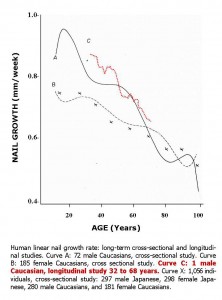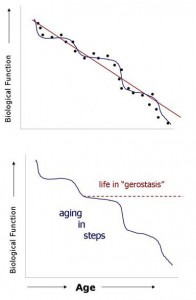The thought of aging, as a young man, was farthest from my mind. It was something my parents and others were going through, not me. That mindset was a long, long time ago. Now it’s different. As I think about the aging process today, three things come to mind: Mt. Colden; the 7-year itch; and an idea about aging from the past.
All the birds have flown up and gone;
A lonely cloud floats leisurely by.
We never tire of looking at each other –
Only the mountain and I.
Li Po, 756 AD (translated from Chinese)
On to the summit of Mt. Colden
I must have been only 19 when I climbed Mt. Colden. It was my first ascent in the Adirondack High Peaks region of upstate New York. High Peaks is a relative term. It’s not in the same scale as the Rockies or the Sierras, but it was the “roof of the world” as far as New York State goes. Besides, it was the nearest ‘high peaks’ I can reach back in those ancient days by bus from NY City’s Port Authority. I chose to go on my first ‘wilderness adventure’ alone in early October when the weather was much colder. No bugs, some colorful foliage still remaining on the trees and, more important, hardly anyone on the trail, suiting my occasional anti-social character. Besides, trekking alone avoids the annoying compromises, non-essential discussions and communal decision-making exercises if I was with a group. With a 50-lb pack, enough food to last for two weeks, I set out on the trip to Mt. Colden that October morning, following the trail along the shore of Lake Colden, through Avalanche Pass and the delightful catwalks along the water’s edge called “Hitch-up Matildas.” Long before the catwalks were built, hikers navigate along the narrow, shallow side of the cliff rising from the lake. According to legend, a guide carrying a young woman called Matilda was constantly urged by her sister to “hitch-up” to keep dry; hence the name for that section of the trail. Struggling up the slopes with a heavy pack, I finally made it to the summit, alone. That was a time in the 70’s when no one really tracks you, mobile pocket-sized phone was just a figment of imagination in the re-runs of Star Trek, no one to turn to if something happens, no one to miss you for days. Perhaps, that was part of the challenge. I reached the summit at sunset, an immigrant city boy finally making it to the top, literally speaking.
Like all first time climbers, the view from the summit was awe inspiring; at least for me whose biggest idea of scaling anything before was taking the elevator to the observatory of the Empire State Building. Mount Colden wasn’t exceptionally high at all at 4714 feet. It’s the 11th highest peak in NY State. Sounds impressive, but the highest peak, Mt. Marcy, was just a few hundred feet higher. Nevertheless, it was my mountain and a beautiful one at that. It started snowing by the time I reached the summit, a freak snowstorm, with winds gushing and snow piling up fast. I did not plan to be on top too long, but no choice. I hurriedly pitched my tent, spending that last hour of daylight piling whatever loose rocks I can find inside the tent so I don’t blow over the precipice during the long, worrisome night.
Sunrise opened with a magnificent view of the snow capped mountains, the lake below, tiny puffs of smoke from camp fires by the lakeshore. But my attention was far out in the horizon, looking hard what’s beyond, straining my eyes to see as far as my then 20/20 vision would let me. I have been on that mountain many times over the years, always alone. But as the decades have come and gone, I no longer look so much beyond the horizon, instead looking more and more to closer things, paying more attention to the near mountains, the lake below, how the ice forms on the gnarled branches in the morning. I think more about the trail going up, remembering how it was years ago; and, now paying even more special attention to the trail going down.
Colden has not changed much. Like any other mountain, it will always be there. It ages too, just not in our own measure of time. But I have aged in the way I look at things, how I appreciated the details. The trail going up has become my analogy of my life’s trail up and the trail down from the summit as my future, what’s left of it. As I gaze up the mountain, I see not just a mountain, but an image of myself and my memories of life’s past challenges and the new challenges on my trail of ages and aging.
I should climb Colden one more time, alone, before I couldn’t anymore.
The visions of our futures
when we chart goals for our lives
climbing mountains
not standing, mired in the mud
from Climbing Mountains by Raymond A. Foss
On to the subject of aging
During those early years, among my many research projects was on the subject of the aging process. That got the least attention in my long list of work, yet one bit of science did stick in my mind over the decades. This I would like to relate to you today.
The 60’s and 70’s was a time when the study of aging or gerontology started to become ‘hot,’ particularly after Leonard Hayflick’s discovery that cells in culture have a maximum life span of 50 cell divisions. It was a time when gerontologists began branching from studying the human animal as a whole to sub-specialties, just like medical doctors. That was also a time when there were so many theories on aging and not that many ways to prove or disprove them. It was an exciting period, a period of dynamic changes. Over the years, the science of gerontology has evolved, more sophisticated, yet most scientists view aging from the narrow perspective of their chosen sub-specialties. While I think it is great to be able to answer the questions about aging though genomics and molecular interactions, I still feel that we are somehow missing something. Perhaps, it is the human element, the individual who actually ages, the one who experiences the process. That individual is lost in the hundreds and even thousands of human subjects needed to prove that a biological phenomenon reflects the population and therefore significant, at least for the statisticians and the peer reviewers.

Survivorship curve derived from period life table for US Social Security area population from all 50 states and territories. www.ssa.gov/OACT/STATS/table4c6.html#ss
The science of aging paints a picture of a progressive, predictable decline of biological function. One topic that always came up during the traditional Tuesday morning science conference at the Orentreich Foundation was the question of whether we age, like all the graphs typically showed, in a mostly sigmoidal S-shaped mode. But hardly anything even in my own life I can consider linear or sigmoidal. Can we instead age in steps rather than a slope of a curve? For some inexplicable reason, this question followed me long after I have gone on to other things and I want to revisit that issue one more time
Aging in steps?
Have you ever wondered about friends that seemed to be aging gracefully, then all of sudden precipitously decline, remain at that level for a while and then decline again? I have seen that in a few friends and aging family members, especially those that I have not seen that often. The French have a phrase, coup d’age or coup de vieux, to describe it. It may very well happen because of a disease or an impairment that precipitated the decline. Or, perhaps it is a natural process for each of one of us, a stepwise decline in biological function, as if life processes go into momentary hibernation, followed by a trigger that brings it down to the next level. Sounds more philosophical than science, I know, but bear with me a little longer.
I have combed the scientific literature to prove this point, but can only come up with a study on nail growth, the very topic that got stuck in my mind in the early Orentreich Foundation days. Maybe some of the readers might find some other instances that follow this phenomenon and I would certainly like to know. In the meantime, let me tell about this one for now.
The nail, like hair, is made up of proteins called keratin and continues to grow throughout life. In the human being, the rate of nail growth declines 50% with age. The measurement of the rate of nail growth is therefore a good indicator of biological age. More important, it can be measured non-invasively, without the need to take blood samples or run to a machine; just mark the nail and measure the distance as the nail grows forward with time. Most aging studies are conducted on a cross-sectional basis, i.e., measurements were done on hundreds, if not thousands, of volunteers at various ages at the same time frame, a biochemical or biophysical ‘snapshot’ of each age group. A longitudinal study, where one measures the same individuals across decades is a much more difficult one. The Baltimore Longitudinal Study of Aging is one such monumental effort.
Gerontologist, strangely enough, can sometimes be an impatient lot. Scientists neither have the time, the funding, nor even the passion to stick to the same topic. Science is always moving, new ideas, new technologies and new ‘toys’ to measure aging. Our attention span is limited for anything that is time-consuming or labor intensive.

Rate of nail growth with age: cross-sectional and longitudinal human studies. From Orentreich et al, 1979.
Linear rate of nail growth is easy to study continuously on the same individual. One such unique longitudinal study was undertaken by William B. Bean, MD, from University of Texas Medical Branch, on the nail of his own left thumb over a 35 year period starting in 1941, from age 32 until age 67. Wish I can tell you what really motivated him to measure his nail growth over such a long period of time. Some insights might be gleaned from his final, more passionate article in 1980. He was fond of natural history, a study he considered “long vanished from contemporary teaching institutions that have become part of intensive care units” He further lamented about “the depersonalization called a ‘health center’ delivering packets of what is termed medical care. The capacity to look remains, but the capacity to see has all but vanished.” It seems that the ills of modern medicine today is nothing new but simply an extension of the same exasperation from more than half a century ago. For Dr. Bean, the desire to study nail growth was “analogous to the curiosity that leads observers to look at tree rings, the baleen plate of the whale or the growth of the tooth of a bear.”
The data from his nail growth study, which became part of a series of five papers over that 35-year obsession, were compelling. These measurements, when superimposed on cross-sectional data in the 1979 article by Norman Orentreich, MD on nail growth (shown in the figure on the right in red), demonstrated that aging, as far as nail growth is concerned, is not a continuous, progressive, sigmoidal decline. Rather, the rate declined in steps, with periods where the rate of aging declined slowly, followed by a rapid drop, like a steep ravine, mimicking a coup d’ age. Orentreich and his colleagues, in the paper published in the Journal of Investigative Dermatology, confirmed the same trend in both cross-sectional and longitudinal study in man and in beagles too. Moreover, Dr. Orentreich described in this paper an aging biorhythm in man characterized by a period of slow decline and a period of rapid decline, each cycle with a 7-year periodicity.
An aging biorhythm? Why not! We have biorhythms for almost every biological function in man, in lower animals, plants and bacteria. We even described before a monthly biorhythm in skin gland function in hamsters. Women have monthly menstrual rhythm. Hair growth has an annual rhythm of growth and shedding. Even folklores (such as the lunar rhythm of werewolves) have their own. Is it too much a leap of faith to have one for aging as well?
But, how did we miss that pattern all these years, if it did exist? I think we missed in part because we are not really looking and also because of how we normally see data. We tend to look at biological data as if we are engineers, chemists or physicists. Biological systems don’t always follow a straight line, except maybe in a petri dish or in an enzyme reaction inside a test tube. But, we evaluate biological data the same way as engineers do. As if we are describing the time-associated decline in the efficiency of a motorcycle engine under standard conditions. Life is the least standard of anything on earth. And, most scientists would discount biological measurements that do not fit the predicted path as background noise, biological errors or simply erratic measurements. I am as guilty of that as anyone else. It was just the way we are taught starting from high school science class.
Let me explain this a bit more by directing your attention to the stylized graph on the right. The data points are scattered, pointing to a downward trend in biological function. Most would simply draw a best fit line or run a regression. Alternatively, one may plot a different curve, following the data as step-wise pattern of steady decline, with moments of pause. That’s always a risky option and sure to get a flurry of negative comments from peer reviewers and statisticians. If one looks at mortality curves in mice for example, deaths never really run a sigmoidal curve downwards. That’s an artificial visual representation. In reality, they die in a series of steps, many dying within a short period of each other making the mortality curve look like a stairway going down. It is almost tempting to look at all the mortality data in mice and rats to see if there is a predictable biorhythm at play too, though their short lifespan can make it difficult to discern. Human mortality is more complex. But what is intriguing is that, like in medflies, fruitflies and yeasts, human mortality stabilizes at very late ages. Once reaching advanced ages, the mortality pattern changes, as if reaching a survival plateau, perhaps an indication of a mortality pause in select long lived individuals.
If there is indeed such a pause in the aging process, what causes that pause? What triggers the downward decline? And more important, how can we exploit this pause to extend beyond the 7-year periodicity? These are intriguing questions. If such a pause does exist, which I call gerostasis (from Greek geron meaning old and histemi meaning standing still) for lack of a better term, then there is a need to re-orient our research directions towards keeping this phase of aging ‘standing still’ for an extended period, delaying the infirmity that follows aging so closely. Homeostasis, the process by which living things regulate its internal environment to keep it stable, should also operate in the aging process. And again, why not! Mammals, for example, regulate body temperature to maintain life. When corrected for infirmity, fitness and body composition, this ability to thermo-regulate declines only marginally with age in man.
What then triggers homeostatic imbalance to precipitate a decline? I am sure there are hosts of possibilities, but your guess is as good as mine. Certainly such imbalance is the cause of age associated diseases. Does this periodicity apply only to nail growth and nothing else? Would interventions that work at one gerostasis step also work for the next one? More questions than answers for now. But, that is the enduring joy (and pain) of science; a new idea can spawn even more questions and controversies as well.
There is one set of scientific data that suggests gerostasis can be extended. Will surely write about that on my next scienceblog. Stay tuned.
It’s just a number
I have taken you to the summit of Colden in a philosophical, reflective moment about my own mortality. Then, I followed it up with my own alternative view of the science of aging. Now, think I should end this blog entry by taking you on a different tangent, slightly irreverent again and certainly not scientific.
The number 7 comes up often when I think about aging. And, NO, I do not believe in numerology. However, there is that 7-year periodicity that Dr. Orentreich described. Aubrey de Grey, a theoretical gerontologist, talks often about the aging equivalent of the Biblical 7 deadly sins, those 7 deadly ‘cellular junk‘ that contributes to the aging process. Recently, scientists at West Virginia University, after studying 30,000 people, came up with that final “magic” number of hours of sleep necessary to lower the risk of cardiovascular disease. You guessed it—it’s 7 again. Nicholas Wade, writing for the NY Times last July (7th month of course), described findings by Boston University scientists who identified a set of genetic variants that predicts extreme longevity with 77 percent accuracy. And lastly, the expected life span of American males this coming decade is 77 (The 2010 Statistical Abstract, US Census Bureau). You don’t have to look hard to find lots of 7s.
I am resisting the temptation of thinking about 7 as something really important. But the Chinese thinks 7 (Pinyin, qī) is an auspicious number because it rhymes with the Chinese character 起 that means ‘arise.’ Certainly not in the same caliber of importance as the number 8 (Pinyin: bā), which Orientals associate with wealth or good fortune (The 2008 Summer Olympics in Beijing opened on 8/8/08 at 8 seconds and 8 minutes past 8 pm local time; the Petronas Towers in Malaysia has 88 floors; a phone number in China with digits all 8 sold for US $ 270,723, just to cite some examples how serious they get). If you are a fan of astrology, then there is always Saturn’s 7-year cycle, too.
The 7-year periodicity of aging intrigued me for the last 30 years. I always think of another association, not of the pseudo-science of astrology or numerology, but with the long forgotten phrase “the 7-year itch.” More appropriate in the 50’s and 60’s than now, the phrase is mostly attributed to the male gender who, after the average of 7 years of marriage, starts flirting, looking for another option, another urge; hence an “itch to scratch.” In today’s era of marriage and divorce, I think 7 months might well be the norm and likely for both sexes. I am sure my fellow older readers here, who are similarly encumbered by the Y chromosome, will agree that among the most memorable image of that era was the picture of Marilyn Monroe in the movie “The 7-year Itch,” the highly acclaimed 1955 romantic comedy by renowned director, Gene Wilder. Marilyn Monroe, the epitome of the 1950’s male fantasy, showcased her comedic talent in the Itch along with the iconic, irreverent photograph of her skirt blowing upwards with the wind through the sidewalk vent of a passing Manhattan subway train. Unlike the serious topic of this scienceblog, the Itch at least had a happy, less itchy ending.
Serious thoughts, one more time
Getting back to more serious matters, gerostasis may be a possible event in the process of aging. Certainly there are not enough data to back that up for now. Most ideas start that way, anyway. It will require some of us to re-examine aging data from the past to see if that can be interpreted in this light to either prove or disprove the notion suggested by the nail growth data of Dr. William Bean and Dr. Norman Orentreich. The 7-year periodicity may simply apply only to nail growth; each biological function may likely have its own periodicity. Whichever that universal number turns out to be later on, the number 7 seems an auspicious one, as the Chinese would agree, to start the process of aging discovery rolling.
Besides, this happens to be my 8th scienceblog article. A sure sign of good fortune and long life. Coincidence? Of course not—it’s destiny!
Jonathan R. Matias
Chief Science Officer
Poseidon Sciences Group
Selected reading
Bean WB (1980) Nail growth. Thirty-five years of observation. Archives of Internal Medicine. 140:73-76
Orentreich N, Markosfksy J, Vogelman J (1979) The effect of aging on linear nail growth. Journal of Investigative Dermatology, 73:125-130
Kenney WL, Munce TA (2003) Aging and human thermo-regulation. Journal of Physiology, 95:2598-2603
Sharestani P (2009) Does aging stop? Currents in Aging Sciences. 2: 3-11



